Chapter 6: Learning
Introduction
The summer sun shines brightly on a deserted stretch of beach. Suddenly, a tiny grey head emerges from the sand, then another and another. Soon the beach is teeming with loggerhead sea turtle hatchlings (Figure 6.1). Although only minutes old, the hatchlings know exactly what to do. Their flippers are not very efficient for moving across the hot sand, yet they continue onward, instinctively. Some are quickly snapped up by gulls circling overhead and others become lunch for hungry ghost crabs that dart out of their holes. Despite these dangers, the hatchlings are driven to leave the safety of their nest and find the ocean.
Unlike baby sea turtles, which know how to find the ocean and swim with no help from their parents, we are not born knowing how to swim (or surf). Yet we humans pride ourselves on our ability to learn. In fact, over thousands of years and across cultures, we have created institutions devoted entirely to learning. But have you ever asked yourself how exactly it is that we learn? What processes are at work as we come to know what we know? This chapter focuses on the primary ways in which learning occurs.
What is Learning?
Learning Objectives
By the end of this section, you will be able to:
- Explain how learned behaviors are different from instincts and reflexes
- Define learning
- Recognize and define three basic forms of learning—classical conditioning, operant conditioning, and observational learning
Birds build nests and migrate as winter approaches. Infants suckle at their mother’s breast. Dogs shake water off wet fur. Salmon swim upstream to spawn, and spiders spin intricate webs. What do these seemingly unrelated behaviors have in common? They all are unlearned behaviors. Both instincts and reflexes are innate behaviors that organisms are born with. Reflexes are a motor or neural reaction to a specific stimulus in the environment. They tend to be simpler than instincts, involve the activity of specific body parts and systems (e.g., the knee-jerk reflex and the contraction of the pupil in bright light), and involve more primitive centers of the central nervous system (e.g., the spinal cord and the medulla). In contrast, instincts are innate behaviors that are triggered by a broader range of events, such as aging and the change of seasons. They are more complex patterns of behavior, involve movement of the organism as a whole (e.g., sexual activity and migration), and involve higher brain centers.
Both reflexes and instincts help an organism adapt to its environment and do not have to be learned. Learning, like reflexes and instincts, allows an organism to adapt to its environment. But unlike instincts and reflexes, learned behaviors involve change and experience: learning is a relatively permanent change in behavior or knowledge that results from experience. In contrast to the innate behaviors discussed above, learning involves acquiring knowledge and skills through experience.
Learning has traditionally been studied in terms of its simplest components—the associations our minds automatically make between events. Our minds have a natural tendency to connect events that occur closely together or in sequence. Associative learning occurs when an organism makes connections between stimuli or events that occur together in the environment. You will see that associative learning is central to all three basic learning processes discussed in this chapter; classical conditioning tends to involve unconscious processes, operant conditioning tends to involve conscious processes, and observational learning adds social and cognitive layers to all the basic associative processes, both conscious and unconscious. These learning processes will be discussed in detail later in the chapter, but it is helpful to have a brief overview of each as you begin to explore how learning is understood from a psychological perspective.
In classical conditioning, also known as Pavlovian conditioning, organisms learn to associate events—or stimuli—that repeatedly happen together. We experience this process throughout our daily lives. For example, you might see a flash of lightning in the sky during a storm and then hear a loud boom of thunder. The sound of the thunder naturally makes you jump (loud noises have that effect by reflex). Because lightning reliably predicts the impending boom of thunder, you may associate the two and jump when you see lightning. Psychological researchers study this associative process by focusing on what can be seen and measured—behaviors. Researchers ask if one stimulus triggers a reflex, can we train a different stimulus to trigger that same reflex?
In operant conditioning, organisms learn, again, to associate events—a behavior and its consequence (reinforcement or punishment). A pleasant consequence encourages more of that behavior in the future, whereas a punishment deters the behavior.
Observational learning extends the effective range of both classical and operant conditioning. In contrast to classical and operant conditioning, in which learning occurs only through direct experience, observational learning is the process of watching others and then imitating what they do. A lot of learning among humans and other animals comes from observational learning. Can you think of something you have learned how to do after watching someone else?
All of the approaches covered in this chapter are part of a particular tradition in psychology, called behaviorism, which we discuss in the next section. However, these approaches do not represent the entire study of learning. Separate traditions of learning have taken shape within different fields of psychology, such as memory and cognition, so you will find that other chapters will round out your understanding of the topic. Over time these traditions tend to converge. For example, in this chapter you will see how cognition has come to play a larger role in behaviorism, whose more extreme adherents once insisted that behaviors are triggered by the environment with no intervening thought.
Classical Conditioning
Learning Objectives
By the end of this section, you will be able to:
- Explain how classical conditioning occurs
- Summarize the processes of acquisition, extinction, spontaneous recovery, generalization, and discrimination
Does the name Ivan Pavlov ring a bell? Even if you are new to the study of psychology, chances are that you have heard of Pavlov and his famous dogs. Pavlov (1849–1936), a Russian scientist, performed extensive research on dogs and is best known for his experiments in classical conditioning (Figure 6.3). As we discussed briefly in the previous section, classical conditioning is a process by which we learn to associate stimuli and, consequently, to anticipate events.

Figure 6.3 Ivan Pavlov’s research on the digestive system of dogs unexpectedly led to his discovery of the learning process now known as classical conditioning.
Pavlov came to his conclusions about how learning occurs completely by accident. Pavlov was a physiologist, not a psychologist. Physiologists study the life processes of organisms, from the molecular level to the level of cells, organ systems, and entire organisms. Pavlov’s area of interest was the digestive system (Hunt, 2007). In his studies with dogs, Pavlov surgically implanted tubes inside dogs’ cheeks to collect saliva. He then measured the amount of saliva produced in response to various foods. Over time, Pavlov (1927) observed that the dogs began to salivate not only at the taste of food, but also at the sight of food, at the sight of an empty food bowl, and even at the sound of the laboratory assistants’ footsteps. Salivating to food in the mouth is reflexive, so no learning is involved. However, dogs don’t naturally salivate at the sight of an empty bowl or the sound of footsteps.
These unusual responses intrigued Pavlov, and he wondered what accounted for what he called the dogs’ “psychic secretions” (Pavlov, 1927). To explore this phenomenon in an objective manner, Pavlov designed a series of carefully controlled experiments to see which stimuli would cause the dogs to salivate. He was able to train the dogs to salivate in response to stimuli that clearly had nothing to do with food, such as the sound of a bell, a light, and a touch on the leg. Through his experiments, Pavlov realized that an organism has two types of responses to its environment: (1) unconditioned (unlearned) responses, or reflexes, and (2) conditioned (learned) responses.
In Pavlov’s experiments, the dogs salivated each time meat powder was presented to them. The meat powder in this situation was an unconditioned stimulus (UCS): a stimulus that elicits a reflexive response in an organism. The dogs’ salivation was an unconditioned response (UCR): a natural (unlearned) reaction to a given stimulus. Before conditioning, think of the dogs’ stimulus and response like this:
Meat powder (UCS) → Salivation (UCR)
In classical conditioning, a neutral stimulus is presented immediately before an unconditioned stimulus. Pavlov would sound a tone (like ringing a bell) and then give the dogs the meat powder (Figure6.4). The tone was the neutral stimulus (NS), which is a stimulus that does not naturally elicit a response. Prior to conditioning, the dogs did not salivate when they just heard the tone because the tone had no association for the dogs. Quite simply this pairing means:
Tone (NS) + Meat Powder (UCS) → Salivation (UCR)
When Pavlov paired the tone with the meat powder over and over again, the previously neutral stimulus (the tone) also began to elicit salivation from the dogs. Thus, the neutral stimulus became the conditioned stimulus (CS), which is a stimulus that elicits a response after repeatedly being paired with an unconditioned stimulus. Eventually, the dogs began to salivate to the tone alone, just as they previously had salivated at the sound of the assistants’ footsteps. The behavior caused by the conditioned stimulus is called the conditioned response (CR). In the case of Pavlov’s dogs, they had learned to associate the tone (CS) with being fed, and they began to salivate (CR) in anticipation of food.
Tone (CS) → Salivation (CR)
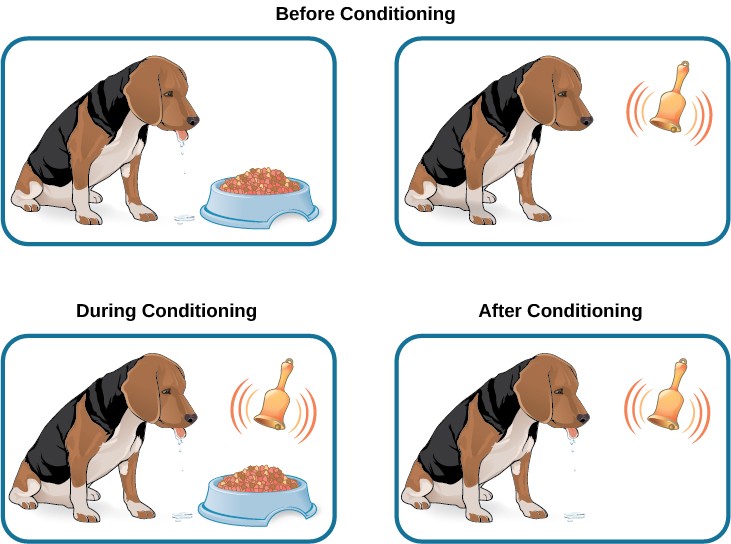
Figure 6.4 Before conditioning, an unconditioned stimulus (food) produces an unconditioned response (salivation), and a neutral stimulus (bell) does not produce a response. During conditioning, the unconditioned stimulus (food) is presented repeatedly just after the presentation of the neutral stimulus (bell). After conditioning, the neutral stimulus alone produces a conditioned response (salivation), thus becoming a conditioned stimulus.

Figure 6.5 In higher-order conditioning, an established conditioned stimulus is paired with a new neutral stimulus (the second-order stimulus), so that eventually the new stimulus also elicits the conditioned response, without the initial conditioned stimulus being presented.
GENERAL PROCESSES IN CLASSICAL CONDITIONING
Now that you know how classical conditioning works and have seen several examples, let’s take a look at some of the general processes involved. In classical conditioning, the initial period of learning is known as acquisition, when an organism learns to connect a neutral stimulus and an unconditioned stimulus. During acquisition, the neutral stimulus begins to elicit the conditioned response, and eventually the neutral stimulus becomes a conditioned stimulus capable of eliciting the conditioned response by itself. Timing is important for conditioning to occur. Typically, there should only be a brief interval between presentation of the conditioned stimulus and the unconditioned stimulus. Depending on what is being conditioned, sometimes this interval is as little as five seconds (Chance, 2009). However, with other types of conditioning, the interval can be up to several hours.
Taste aversion is a type of conditioning in which an interval of several hours may pass between the conditioned stimulus (something ingested) and the unconditioned stimulus (nausea or illness). Here’s how it works. Between classes, you and a friend grab a quick lunch from a food cart on campus. You share a dish of chicken curry and head off to your next class. A few hours later, you feel nauseous and become ill. Although your friend is fine and you determine that you have intestinal flu (the food is not the culprit), you’ve developed a taste aversion; the next time you are at a restaurant and someone orders curry, you immediately feel ill. While the chicken dish is not what made you sick, you are experiencing taste aversion: you’ve been conditioned to be averse to a food after a single, negative experience.
How does this occur—conditioning based on a single instance and involving an extended time lapse between the event and the negative stimulus? Research into taste aversion suggests that this response may be an evolutionary adaptation designed to help organisms quickly learn to avoid harmful foods (Garcia & Rusiniak, 1980; Garcia & Koelling, 1966).
Once we have established the connection between the unconditioned stimulus and the conditioned stimulus, how do we break that connection and get the dog, cat, or child to stop responding? In classical conditioning terms, you would be giving the conditioned stimulus, but not the unconditioned stimulus. Pavlov explored this scenario in his experiments with dogs: sounding the tone without giving the dogs the meat powder. Soon the dogs stopped responding to the tone. Extinction is the decrease in the conditioned response when the unconditioned stimulus is no longer presented with the conditioned stimulus. When presented with the conditioned stimulus alone, the dog, cat, or other organism would show a weaker and weaker response, and finally no response. In classical conditioning terms, there is a gradual weakening and disappearance of the conditioned response.
What happens when learning is not used for a while—when what was learned lies dormant? As we just discussed, Pavlov found that when he repeatedly presented the bell (conditioned stimulus) without the meat powder (unconditioned stimulus), extinction occurred; the dogs stopped salivating to the bell. However, after a couple of hours of resting from this extinction training, the dogs again began to salivate when Pavlov rang the bell. The behavior of Pavlov’s dogs and Tiger illustrates a concept Pavlov called spontaneous recovery: the return of a previously extinguished conditioned response following a rest period (Figure6.7).
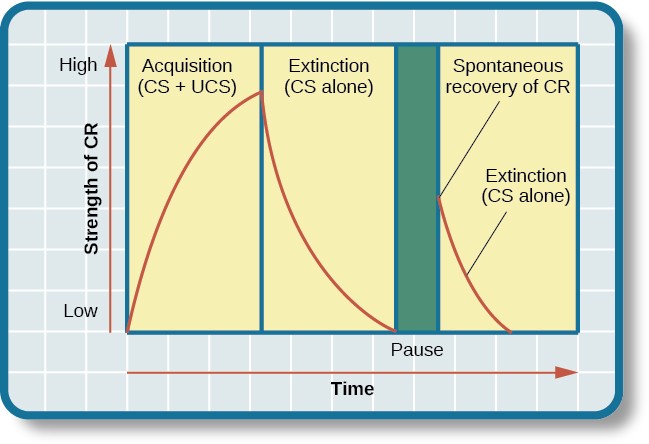
Figure 6.7 This is the curve of acquisition, extinction, and spontaneous recovery. The rising curve shows the conditioned response quickly getting stronger through the repeated pairing of the conditioned stimulus and the unconditioned stimulus (acquisition). Then the curve decreases, which shows how the conditioned response weakens when only the conditioned stimulus is presented (extinction). After a break or pause from conditioning, the conditioned response reappears (spontaneous recovery).
Acquisition and extinction involve the strengthening and weakening, respectively, of a learned association. Two other learning processes—stimulus discrimination and stimulus generalization—are involved in distinguishing which stimuli will trigger the learned association. Animals (including humans) need to distinguish between stimuli—for example, between sounds that predict a threatening event and sounds that do not—so that they can respond appropriately (such as running away if the sound is threatening). When an organism learns to respond differently to various stimuli that are similar, it is called stimulus discrimination. In classical conditioning terms, the organism demonstrates the conditioned response only to the conditioned stimulus. Pavlov’s dogs discriminated between the basic tone that sounded before they were fed and other tones (e.g., the doorbell), because the other sounds did not predict the arrival of food.
On the other hand, when an organism demonstrates the conditioned response to stimuli that are similar to the condition stimulus, it is called stimulus generalization, the opposite of stimulus discrimination. The more similar a stimulus is to the condition stimulus, the more likely the organism is to give the conditioned response. Sometimes, classical conditioning can lead to habituation. Habituation occurs when we learn not to respond to a stimulus that is presented repeatedly without change. As the stimulus occurs over and over, we learn not to focus our attention on it.
BEHAVIORISM
John B. Watson, shown in Figure 6.8, is considered the founder of behaviorism. Behaviorism is a school of thought that arose during the first part of the 20th century, which incorporates elements of Pavlov’s classical conditioning (Hunt, 2007). In stark contrast with Freud, who considered the reasons for behavior to be hidden in the unconscious, Watson championed the idea that all behavior can be studied as a simple stimulus-response reaction, without regard for internal processes. Watson argued that in order for psychology to become a legitimate science, it must shift its concern away from internal mental processes because mental processes cannot be seen or measured. Instead, he asserted that psychology must focus on outward observable behavior that can be measured.
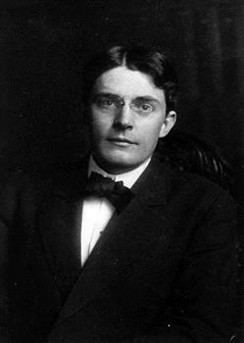
Figure 6.8 John B. Watson used the principles of classical conditioning in the study of human emotion.
Watson’s ideas were influenced by Pavlov’s work. According to Watson, human behavior, just like animal behavior, is primarily the result of conditioned responses. Whereas Pavlov’s work with dogs involved the conditioning of reflexes, Watson believed the same principles could be extended to the conditioning of human emotions (Watson, 1919). Thus began Watson’s work with his graduate student Rosalie Rayner and a baby called Little Albert. Through their experiments with Little Albert, Watson and Rayner (1920) demonstrated how fears can be conditioned.
In 1920, Watson was the chair of the psychology department at Johns Hopkins University. Through his position at the university he came to meet Little Albert’s mother, Arvilla Merritte, who worked at a campus hospital (DeAngelis, 2010). Watson offered her a dollar to allow her son to be the subject of his experiments in classical conditioning. Through these experiments, Little Albert was exposed to and conditioned to fear certain things. Initially he was presented with various neutral stimuli, including a rabbit, a dog, a monkey, masks, cotton wool, and a white rat. He was not afraid of any of these things. Then Watson, with the help of Rayner, conditioned Little Albert to associate these stimuli with an emotion—fear. For example, Watson handed Little Albert the white rat, and Little Albert enjoyed playing with it. Then Watson made a loud sound, by striking a hammer against a metal bar hanging behind Little Albert’s head, each time Little Albert touched the rat. Little Albert was frightened by the sound—demonstrating a reflexive fear of sudden loud noises—and began to cry. Watson repeatedly paired the loud sound with the white rat. Soon Little Albert became frightened by the white rat alone. In this case, what are the UCS, CS, UCR, and CR? Days later, Little Albert demonstrated stimulus generalization—he became afraid of other furry things: a rabbit, a furry coat, and even a Santa Claus mask (Figure 6.9). Watson had succeeded in conditioning a fear response in Little Albert, thus demonstrating that emotions could become conditioned responses. It had been Watson’s intention to produce a phobia—a persistent, excessive fear of a specific object or situation— through conditioning alone, thus countering Freud’s view that phobias are caused by deep, hidden conflicts in the mind. However, there is no evidence that Little Albert experienced phobias in later years. Little Albert’s mother moved away, ending the experiment, and Little Albert himself died a few years later of unrelated causes. While Watson’s research provided new insight into conditioning, it would be considered unethical by today’s standards.
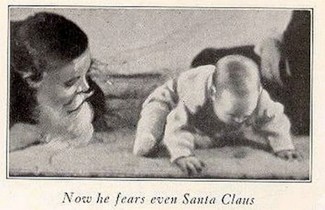
Figure 6.9 Through stimulus generalization, Little Albert came to fear furry things, including Watson in a Santa Claus mask.
Operant Conditioning
Learning Objectives
By the end of this section, you will be able to:
- Define operant conditioning
- Explain the difference between reinforcement and punishment
- Distinguish between reinforcement schedules
The previous section of this chapter focused on the type of associative learning known as classical conditioning. Remember that in classical conditioning, something in the environment triggers a reflex automatically, and researchers train the organism to react to a different stimulus. Now we turn to the second type of associative learning, operant conditioning. In operant conditioning, organisms learn to associate a behavior and its consequence (Table 6.1). A pleasant consequence makes that behavior more likely to be repeated in the future. For example, Spirit, a dolphin at the National Aquarium in Baltimore, does a flip in the air when her trainer blows a whistle. The consequence is that she gets a fish.
|
|
Classical Conditioning |
Operant Conditioning |
|
Conditioning approach |
An unconditioned stimulus (such as food) is paired with a neutral stimulus (such as a bell). The neutral stimulus eventually becomes the conditioned stimulus, which brings about the conditioned response (salivation). |
The target behavior is followed by reinforcement or punishment to either strengthen or weaken it, so that the learner is more likely to exhibit the desired behavior in the future. |
|
Stimulus timing |
The stimulus occurs immediately before the response. |
The stimulus (either reinforcement or punishment) occurs soon after the response. |
Psychologist B. F. Skinner saw that classical conditioning is limited to existing behaviors that are reflexively elicited, and it doesn’t account for new behaviors such as riding a bike. He proposed a theory about how such behaviors come about. Skinner believed that behavior is motivated by the consequences we receive for the behavior: the reinforcements and punishments. His idea that learning is the result of consequences is based on the law of effect, which was first proposed by psychologist Edward Thorndike.
According to the law of effect, behaviors that are followed by consequences that are satisfying to the organism are more likely to be repeated, and behaviors that are followed by unpleasant consequences are less likely to be repeated (Thorndike, 1911). Essentially, if an organism does something that brings about a desired result, the organism is more likely to do it again. If an organism does something that does not bring about a desired result, the organism is less likely to do it again. An example of the law of effect is in employment. One of the reasons (and often the main reason) we show up for work is because we get paid to do so. If we stop getting paid, we will likely stop showing up—even if we love our job.
Working with Thorndike’s law of effect as his foundation, Skinner began conducting scientific experiments on animals (mainly rats and pigeons) to determine how organisms learn through operant conditioning (Skinner, 1938). He placed these animals inside an operant conditioning chamber, which has come to be known as a “Skinner box” (Figure 6.10). A Skinner box contains a lever (for rats) or disk (for pigeons) that the animal can press or peck for a food reward via the dispenser. Speakers and lights can be associated with certain behaviors. A recorder counts the number of responses made by the animal.
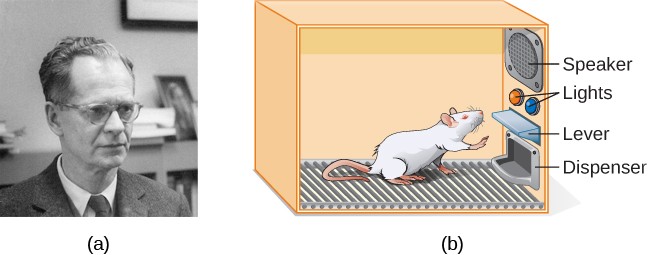
Figure 6.10 (a) B. F. Skinner developed operant conditioning for systematic study of how behaviors are strengthened or weakened according to their consequences. (b) In a Skinner box, a rat presses a lever in an operant conditioning chamber to receive a food reward. (credit a: modification of work by “Silly rabbit”/Wikimedia Commons)
In discussing operant conditioning, we use several everyday words—positive, negative, reinforcement, and punishment—in a specialized manner. In operant conditioning, positive and negative do not mean good and bad. Instead, positive means you are adding something, and negative means you are taking something away. Reinforcement means you are increasing a behavior, and punishment means you are decreasing a behavior. Reinforcement can be positive or negative, and punishment can also be positive or negative. All reinforcers (positive or negative) increase the likelihood of a behavioral response. All punishers (positive or negative) decrease the likelihood of a behavioral response. Now let’s combine these four terms: positive reinforcement, negative reinforcement, positive punishment, and negative punishment (Table 6.2).
REINFORCEMENT
The most effective way to teach a person or animal a new behavior is with positive reinforcement. In positive reinforcement, a desirable stimulus is added to increase a behavior. Positive reinforcement as a learning tool is extremely effective. It has been found that one of the most effective ways to increase achievement in school districts with below-average reading scores was to pay the children to read. Specifically, second-grade students in Dallas were paid $2 each time they read a book and passed a short quiz about the book. The result was a significant increase in reading comprehension (Fryer, 2010). What do you think about this program? If Skinner were alive today, he would probably think this was a great idea. He was a strong proponent of using operant conditioning principles to influence students’ behavior at school. In fact, in addition to the Skinner box, he also invented what he called a teaching machine that was designed to reward small steps in learning (Skinner, 1961)—an early forerunner of computer-assisted learning.
In negative reinforcement, an undesirable stimulus is removed to increase a behavior. For example, car manufacturers use the principles of negative reinforcement in their seatbelt systems, which go “beep, beep, beep” until you fasten your seatbelt. The annoying sound stops when you exhibit the desired behavior, increasing the likelihood that you will buckle up in the future. Negative reinforcement is also used frequently in horse training. Riders apply pressure—by pulling the reins or squeezing their legs—and then remove the pressure when the horse performs the desired behavior, such as turning or speeding up. The pressure is the negative stimulus that the horse wants to remove.
PUNISHMENT
Many people confuse negative reinforcement with punishment in operant conditioning, but they are two very different mechanisms. Remember that reinforcement, even when it is negative, always increases a behavior. In contrast, punishment always decreases a behavior. In positive punishment, you add an undesirable stimulus to decrease a behavior. An example of positive punishment is scolding a student to get the student to stop texting in class. In this case, a stimulus (the reprimand) is added in order to decrease the behavior (texting in class). In negative punishment, you remove an aversive stimulus to decrease behavior. For example, when a child misbehaves, a parent can take away a favorite toy. In this case, a stimulus (the toy) is removed in order to decrease the behavior.
Punishment, especially when it is immediate, is one way to decrease undesirable behavior. While strategies like this are common today, in the past children were often subject to physical punishment, such as spanking. It’s important to be aware of some of the drawbacks in using physical punishment on children. First, punishment may teach fear. Consequently, most schools in the United States have banned corporal punishment. Second, punishment may cause children to become more aggressive and prone to antisocial behavior and delinquency (Gershoff, 2002). They see their parents resort to spanking when they become angry and frustrated, so, in turn, they may act out this same behavior when they become angry and frustrated.
While positive punishment can be effective in some cases, Skinner suggested that the use of punishment should be weighed against the possible negative effects. Today’s psychologists and parenting experts favor reinforcement over punishment—they recommend that you catch your child doing something good and reward her for it.
Shaping
In his operant conditioning experiments, Skinner often used an approach called shaping. Instead of rewarding only the target behavior, in shaping, we reward successive approximations of a target behavior. Why is shaping needed? Remember that in order for reinforcement to work, the organism must first display the behavior. Shaping is needed because it is extremely unlikely that an organism will display anything but the simplest of behaviors spontaneously. In shaping, behaviors are broken down into many small, achievable steps. The specific steps used in the process are the following:
- Reinforce any response that resembles the desired behavior.
- Then reinforce the response that more closely resembles the desired behavior. You will no longer reinforce the previously reinforced response.
- Next, begin to reinforce the response that even more closely resembles the desired behavior.
- Continue to reinforce closer and closer approximations of the desired behavior.
- Finally, only reinforce the desired behavior.
Shaping is often used in teaching a complex behavior or chain of behaviors. Skinner used shaping to teach pigeons not only such relatively simple behaviors as pecking a disk in a Skinner box, but also many unusual and entertaining behaviors, such as turning in circles, walking in figure eights, and even playing ping pong; the technique is commonly used by animal trainers today. An important part of shaping is stimulus discrimination. Recall Pavlov’s dogs—he trained them to respond to the tone of a bell, and not to similar tones or sounds. This discrimination is also important in operant conditioning and in shaping behavior.
It’s easy to see how shaping is effective in teaching behaviors to animals, but how does shaping work with humans? Let’s consider parents whose goal is to have their child learn to clean his room. They use shaping to help him master steps toward the goal. Instead of performing the entire task, they set up these steps and reinforce each step. First, he cleans up one toy. Second, he cleans up five toys. Third, he chooses whether to pick up ten toys or put his books and clothes away. Fourth, he cleans up everything except two toys. Finally, he cleans his entire room.
PRIMARY AND SECONDARY REINFORCERS
What would be a good reinforce for humans? For your daughter Sydney, it was the promise of a toy if she cleaned her room. How about Joaquin, the soccer player? If you gave Joaquin a piece of candy every time he made a goal, you would be using a primary reinforcer. Primary reinforcers are reinforcers that have innate reinforcing qualities. These kinds of reinforcers are not learned. Water, food, sleep, shelter, sex, and touch, among others, are primary reinforcers. Pleasure is also a primary reinforcer. Organisms do not lose their drive for these things. For most people, jumping in a cool lake on a very hot day would be reinforcing and the cool lake would be innately reinforcing—the water would cool the person off (a physical need), as well as provide pleasure.
A secondary reinforcer has no inherent value and only has reinforcing qualities when linked with a primary reinforcer. Praise, linked to affection, is one example of a secondary reinforcer, as when you called out “Great shot!” every time Joaquin made a goal. Another example, money, is only worth something when you can use it to buy other things—either things that satisfy basic needs (food, water, shelter—all primary reinforcers) or other secondary reinforcers. If you were on a remote island in the middle of the Pacific Ocean and you had stacks of money, the money would not be useful if you could not spend it. What about the stickers on the behavior chart? They also are secondary reinforcers. Sometimes, instead of stickers on a sticker chart, a token is used. Tokens, which are also secondary reinforcers, can then be traded in for rewards and prizes. Entire behavior management systems, known as token economies, are built around the use of these kinds of token reinforcers. Token economies have been found to be very effective at modifying behavior in a variety of settings such as schools, prisons, and mental hospitals.
REINFORCEMENT SCHEDULES
Remember, the best way to teach a person or animal a behavior is to use positive reinforcement. For example, Skinner used positive reinforcement to teach rats to press a lever in a Skinner box. At first, the rat might randomly hit the lever while exploring the box, and out would come a pellet of food. After eating the pellet, what do you think the hungry rat did next? It hit the lever again, and received another pellet of food. Each time the rat hit the lever, a pellet of food came out. When an organism receives a reinforcer each time it displays a behavior, it is called continuous reinforcement. This reinforcement schedule is the quickest way to teach someone a behavior, and it is especially effective in training a new behavior. Let’s look back at the dog that was learning to sit earlier in the chapter. Now, each time he sits, you give him a treat. Timing is important here: you will be most successful if you present the reinforcer immediately after he sits, so that he can make an association between the target behavior (sitting) and the consequence (getting a treat).
Once a behavior is trained, researchers and trainers often turn to another type of reinforcement schedule—partial reinforcement. In partial reinforcement, also referred to as intermittent reinforcement, the person or animal does not get reinforced every time they perform the desired behavior. There are several different types of partial reinforcement schedules (Table 6.3). These schedules are described as either fixed or variable, and as either interval or ratio. Fixed refers to the number of responses between reinforcements, or the amount of time between reinforcements, which is set and unchanging. Variable refers to the number of responses or amount of time between reinforcements, which varies or changes. Interval means the schedule is based on the time between reinforcements, and ratio means the schedule is based on the number of responses between reinforcements.
|
Reinforcement Schedule |
Description |
Result |
Example |
|
Fixed interval |
Reinforcement is delivered at predictable time intervals (e.g., after 5, 10, 15, and 20 minutes). |
Moderate response rate with significant pauses after reinforcement |
Hospital patient uses patient-controlled, doctor-timed pain relief |
|
Variable interval |
Reinforcement is delivered at unpredictable time intervals (e.g., after 5, 7, 10, and 20 minutes). |
Moderate yet steady response rate |
Checking Facebook |
|
Table 6.3 Reinforcement Schedules |
|||
|
Reinforcement Schedule |
Description |
Result |
Example |
|
Fixed ratio |
Reinforcement is delivered after a predictable number of responses (e.g., after 2, 4, 6, and 8 responses). |
High response rate with pauses after reinforcement |
Piecework—factory worker getting paid for every x number of items manufactured |
|
Variable ratio |
Reinforcement is delivered after an unpredictable number of responses (e.g., after 1, 4, 5, and 9 responses). |
High and steady response rate |
Gambling |
Now let’s combine these four terms. A fixed interval reinforcement schedule is when behavior is rewarded after a set amount of time. For example, June undergoes major surgery in a hospital. During recovery, she is expected to experience pain and will require prescription medications for pain relief. June is given an IV drip with a patient-controlled painkiller. Her doctor sets a limit: one dose per hour. June pushes a button when pain becomes difficult, and she receives a dose of medication. Since the reward (pain relief) only occurs on a fixed interval, there is no point in exhibiting the behavior when it will not be rewarded.
With a variable interval reinforcement schedule, the person or animal gets the reinforcement based on varying amounts of time, which are unpredictable. Say that Manuel is the manager at a fast-food restaurant. Every once in a while someone from the quality control division comes to Manuel’s restaurant. If the restaurant is clean and the service is fast, everyone on that shift earns a $20 bonus. Manuel never knows when the quality control person will show up, so he always tries to keep the restaurant clean and ensures that his employees provide prompt and courteous service. His productivity regarding prompt service and keeping a clean restaurant are steady because he wants his crew to earn the bonus.
With a fixed ratio reinforcement schedule, there are a set number of responses that must occur before the behavior is rewarded. Carla sells glasses at an eyeglass store, and she earns a commission every time she sells a pair of glasses. She always tries to sell people more pairs of glasses, including prescription sunglasses or a backup pair, so she can increase her commission. She does not care if the person really needs the prescription sunglasses, Carla just wants her bonus. The quality of what Carla sells does not matter because her commission is not based on quality; it’s only based on the number of pairs sold. This distinction in the quality of performance can help determine which reinforcement method is most appropriate for a particular situation. Fixed ratios are better suited to optimize the quantity of output, whereas a fixed interval, in which the reward is not quantity based, can lead to a higher quality of output.
In a variable ratio reinforcement schedule, the number of responses needed for a reward varies. This is the most powerful partial reinforcement schedule. An example of the variable ratio reinforcement schedule is gambling. Imagine that Sarah—generally a smart, thrifty woman—visits Las Vegas for the first time. She is not a gambler, but out of curiosity she puts a quarter into the slot machine, and then another, and another. Nothing happens. Two dollars in quarters later, her curiosity is fading, and she is just about to quit. But then, the machine lights up, bells go off, and Sarah gets 50 quarters back. That’s more like it! Sarah gets back to inserting quarters with renewed interest, and a few minutes later she has used up all her gains and is $10 in the hole. Now might be a sensible time to quit. And yet, she keeps putting money into the slot machine because she never knows when the next reinforcement is coming. She keeps thinking that with the next quarter she could win $50, or $100, or even more. Because the reinforcement schedule in most types of gambling has a variable ratio schedule, people keep trying and hoping that the next time they will win big. This is one of the reasons that gambling is so addictive—and so resistant to extinction.
In operant conditioning, extinction of a reinforced behavior occurs at some point after reinforcement stops, and the speed at which this happens depends on the reinforcement schedule. In a variable ratio schedule, the point of extinction comes very slowly, as described above. But in the other reinforcement schedules, extinction may come quickly. For example, if June presses the button for the pain relief medication before the allotted time her doctor has approved, no medication is administered. She is on a fixed interval reinforcement schedule (dosed hourly), so extinction occurs quickly when reinforcement doesn’t come at the expected time. Among the reinforcement schedules, variable ratio is the most productive and the most resistant to extinction. Fixed interval is the least productive and the easiest to extinguish (Figure 6.13).
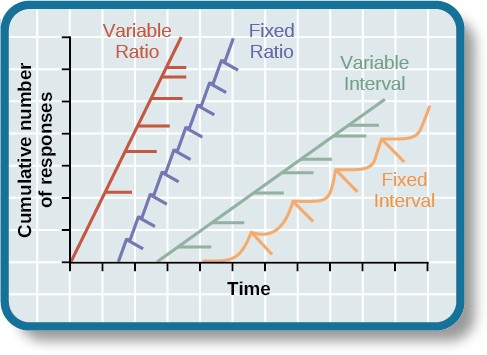
Figure 6.13 The four reinforcement schedules yield different response patterns. The variable ratio schedule is unpredictable and yields high and steady response rates, with little if any pause after reinforcement (e.g., gambler). A fixed ratio schedule is predictable and produces a high response rate, with a short pause after reinforcement (e.g., eyeglass saleswoman). The variable interval schedule is unpredictable and produces a moderate, steady response rate (e.g., restaurant manager). The fixed interval schedule yields a scallop-shaped response pattern, reflecting a significant pause after reinforcement (e.g., surgery patient).
COGNITION AND LATENT LEARNING
Although strict behaviorists such as Skinner and Watson refused to believe that cognition (such as thoughts and expectations) plays a role in learning, another behaviorist, Edward C. Tolman, had a different opinion. Tolman’s experiments with rats demonstrated that organisms can learn even if they do not receive immediate reinforcement (Tolman & Honzik, 1930; Tolman, Ritchie, & Kalish, 1946). This finding was in conflict with the prevailing idea at the time that reinforcement must be immediate in order for learning to occur, thus suggesting a cognitive aspect to learning. In the experiments, Tolman placed hungry rats in a maze with no reward for finding their way through it. He also studied a comparison group that was rewarded with food at the end of the maze. As the unreinforced rats explored the maze, they developed a cognitive map: a mental picture of the layout of the maze (Figure 6.15). After 10 sessions in the maze without reinforcement, food was placed in a goal box at the end of the maze. As soon as the rats became aware of the food, they were able to find their way through the maze quickly, just as quickly as the comparison group, which had been rewarded with food all along. This is known as latent learning: learning that occurs but is not observable in behavior until there is a reason to demonstrate it.
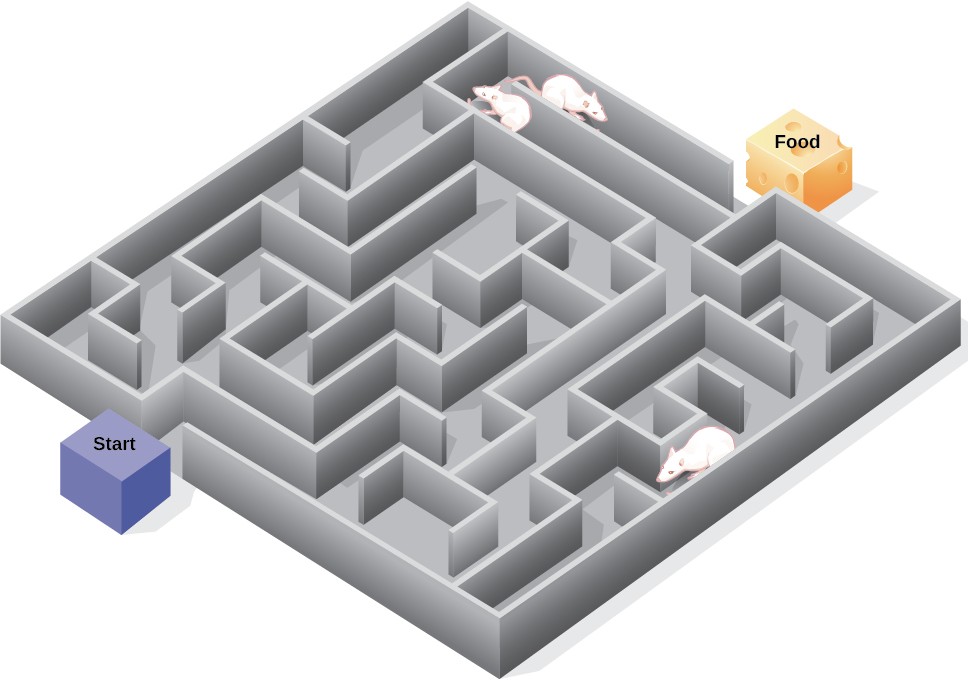
Figure 6.15 Psychologist Edward Tolman found that rats use cognitive maps to navigate through a maze. Have you ever worked your way through various levels on a video game? You learned when to turn left or right, move up or down. In that case you were relying on a cognitive map, just like the rats in a maze. (credit: modification of work by “FutUndBeidl”/Flickr)
Latent learning also occurs in humans. Children may learn by watching the actions of their parents but only demonstrate it at a later date, when the learned material is needed. For example, suppose that Ravi’s dad drives him to school every day. In this way, Ravi learns the route from his house to his school, but he’s never driven there himself, so he has not had a chance to demonstrate that he’s learned the way. One morning Ravi’s dad has to leave early for a meeting, so he can’t drive Ravi to school. Instead, Ravi follows the same route on his bike that his dad would have taken in the car. This demonstrates latent learning. Ravi had learned the route to school, but had no need to demonstrate this knowledge earlier.
Observational Learning (Modeling)
Learning Objectives
By the end of this section, you will be able to:
- Define observational learning
- Discuss the steps in the modeling process
- Explain the prosocial and antisocial effects of observational learning
Previous sections of this chapter focused on classical and operant conditioning, which are forms of associative learning. In observational learning, we learn by watching others and then imitating, or modeling, what they do or say. The individuals performing the imitated behavior are called models. Research suggests that this imitative learning involves a specific type of neuron, called a mirror neuron (Hickock, 2010; Rizzolatti, Fadiga, Fogassi, & Gallese, 2002; Rizzolatti, Fogassi, & Gallese, 2006).
Imitation is much more obvious in humans, but is imitation really the sincerest form of flattery? Like Tolman, whose experiments with rats suggested a cognitive component to learning, psychologist Albert Bandura’s ideas about learning were different from those of strict behaviorists. Bandura and other researchers proposed a brand of behaviorism called social learning theory, which took cognitive processes into account. According to Bandura, pure behaviorism could not explain why learning can take place in the absence of external reinforcement. He felt that internal mental states must also have a role in learning and that observational learning involves much more than imitation. In imitation, a person simply copies what the model does. Observational learning is much more complex. According to Lefrançois (2012) there are several ways that observational learning can occur:
- You learn a new response. After watching your coworker get chewed out by your boss for coming in late, you start leaving home 10 minutes earlier so that you won’t be late.
- You choose whether or not to imitate the model depending on what you saw happen to the model. Remember Julian and his father? When learning to surf, Julian might watch how his father pops up successfully on his surfboard and then attempt to do the same thing. On the other hand, Julian might learn not to touch a hot stove after watching his father get burned on a stove.
- You learn a general rule that you can apply to other situations.
Bandura identified three kinds of models: live, verbal, and symbolic. A live model demonstrates a behavior in person, as when Ben stood up on his surfboard so that Julian could see how he did it. A verbal instructional model does not perform the behavior, but instead explains or describes the behavior, as when a soccer coach tells his young players to kick the ball with the side of the foot, not with the toe. A symbolic model can be fictional characters or real people who demonstrate behaviors in books, movies, television shows, video games, or Internet sources (Figure 6.17).
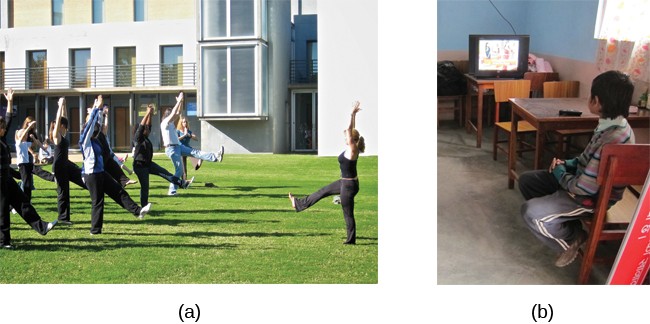
Figure 6.17 (a) Yoga students learn by observation as their yoga instructor demonstrates the correct stance and movement for her students (live model). (b) Models don’t have to be present for learning to occur: through symbolic modeling, this child can learn a behavior by watching someone demonstrate it on television. (credit a: modification of work by Tony Cecala; credit b: modification of work by Andrew Hyde)
STEPS IN THE MODELING PROCESS
Of course, we don’t learn a behavior simply by observing a model. Bandura described specific steps in the process of modeling that must be followed if learning is to be successful: attention, retention, reproduction, and motivation. First, you must be focused on what the model is doing—you have to pay attention. Next, you must be able to retain, or remember, what you observed; this is retention. Then, you must be able to perform the behavior that you observed and committed to memory; this is reproduction. Finally, you must have motivation. You need to want to copy the behavior, and whether or not you are motivated depends on what happened to the model. If you saw that the model was reinforced for her behavior, you will be more motivated to copy her. This is known as vicarious reinforcement. On the other hand, if you observed the model being punished, you would be less motivated to copy her. This is called vicarious punishment. For example, imagine that four-year-old Allison watched her older sister Kaitlyn playing in their mother’s makeup, and then saw Kaitlyn get a time out when their mother came in. After their mother left the room, Allison was tempted to play in the make-up, but she did not want to get a time-out from her mother. What do you think she did? Once you actually demonstrate the new behavior, the reinforcement you receive plays a part in whether or not you will repeat the behavior.
Bandura researched modeling behavior, particularly children’s modeling of adults’ aggressive and violent behaviors (Bandura, Ross, & Ross, 1961). He conducted an experiment with a five-foot inflatable doll that he called a Bobo doll. In the experiment, children’s aggressive behavior was influenced by whether the teacher was punished for her behavior. In one scenario, a teacher acted aggressively with the doll, hitting, throwing, and even punching the doll, while a child watched. There were two types of responses by the children to the teacher’s behavior. When the teacher was punished for her bad behavior, the children decreased their tendency to act as she had. When the teacher was praised or ignored (and not punished for her behavior), the children imitated what she did, and even what she said. They punched, kicked, and yelled at the doll.
What are the implications of this study? Bandura concluded that we watch and learn, and that this learning can have both prosocial and antisocial effects. Prosocial (positive) models can be used to encourage socially acceptable behavior. Parents in particular should take note of this finding. If you want your children to read, then read to them. Let them see you reading. Keep books in your home. Talk about your favorite books. If you want your children to be healthy, then let them see you eat right and exercise, and spend time engaging in physical fitness activities together. The same holds true for qualities like kindness, courtesy, and honesty. The main idea is that children observe and learn from their parents, even their parents’ morals, so be consistent and toss out the old adage “Do as I say, not as I do,” because children tend to copy what you do instead of what you say. Besides parents, many public figures, such as Martin Luther King, Jr. and Mahatma Gandhi, are viewed as prosocial models who are able to inspire global social change. Can you think of someone who has been a prosocial model in your life?
The antisocial effects of observational learning are also worth mentioning. As you saw from the example of Claire at the beginning of this section, her daughter viewed Claire’s aggressive behavior and copied it. Research suggests that this may help to explain why abused children often grow up to be abusers themselves (Murrell, Christoff, & Henning, 2007). In fact, about 30% of abused children become abusive parents (U.S. Department of Health & Human Services, 2013). We tend to do what we know. Abused children, who grow up witnessing their parents deal with anger and frustration through violent and aggressive acts, often learn to behave in that manner themselves. Sadly, it’s a vicious cycle that’s difficult to break.
Some studies suggest that violent television shows, movies, and video games may also have antisocial effects (Figure 6.18) although further research needs to be done to understand the correlational and causational aspects of media violence and behavior. Some studies have found a link between viewing violence and aggression seen in children (Anderson & Gentile, 2008; Kirsch, 2010; Miller, Grabell, Thomas, Bermann, & Graham-Bermann, 2012). These findings may not be surprising, given that a child graduating from high school has been exposed to around 200,000 violent acts including murder, robbery, torture, bombings, beatings, and rape through various forms of media (Huston et al., 1992). Not only might viewing media violence affect aggressive behavior by teaching people to act that way in real life situations, but it has also been suggested that repeated exposure to violent acts also desensitizes people to it. Psychologists are working to understand this dynamic.
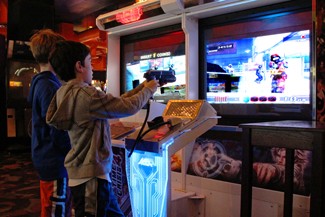
Figure 6.18 Can video games make us violent? Psychological researchers study this topic. (credit: “woodleywonderworks”/Flickr)
Summary
What Is Learning?
Instincts and reflexes are innate behaviors—they occur naturally and do not involve learning. In contrast, learning is a change in behavior or knowledge that results from experience. There are three main types of learning: classical conditioning, operant conditioning, and observational learning. Both classical and operant conditioning are forms of associative learning where associations are made between events that occur together. Observational learning is just as it sounds: learning by observing others.
Classical Conditioning
Pavlov’s pioneering work with dogs contributed greatly to what we know about learning. His experiments explored the type of associative learning we now call classical conditioning. In classical conditioning, organisms learn to associate events that repeatedly happen together, and researchers study how a reflexive response to a stimulus can be mapped to a different stimulus—by training an association between the two stimuli. Pavlov’s experiments show how stimulus-response bonds are formed. Watson, the founder of behaviorism, was greatly influenced by Pavlov’s work. He tested humans by conditioning fear in an infant known as Little Albert. His findings suggest that classical conditioning can explain how some fears develop.
Operant Conditioning
Operant conditioning is based on the work of B. F. Skinner. Operant conditioning is a form of learning in which the motivation for a behavior happens after the behavior is demonstrated. An animal or a human receives a consequence after performing a specific behavior. The consequence is either a reinforcer or a punisher. All reinforcement (positive or negative) increases the likelihood of a behavioral response. All punishment (positive or negative) decreases the likelihood of a behavioral response. Several types of reinforcement schedules are used to reward behavior depending on either a set or variable period of time.
Observational Learning (Modeling)
According to Bandura, learning can occur by watching others and then modeling what they do or say. This is known as observational learning. There are specific steps in the process of modeling that must be followed if learning is to be successful. These steps include attention, retention, reproduction, and motivation. Through modeling, Bandura has shown that children learn many things both good and bad simply by watching their parents, siblings, and others.
